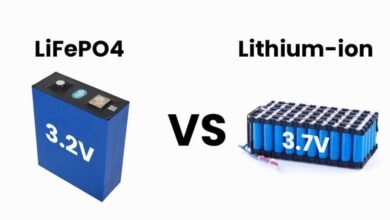How Social Media Impacts Brand Growth

Since the establishment of Facebook in 2004, social media has completely transformed the dynamics between brands and their customers. Social media has uniquely reshaped brands and consumer relationships, and has created a new social norm in which brands are frequent guests in our daily lives and routines. They provide stealthy and quasi-permissive means for companies to use social media platforms to strengthen brand awareness and build consumer trust, inform consumers about organizational values, and ultimately drive revenue. Companies now have purposeful channels to distinguish themselves in organic or paid content, or direct engagement, which has made standing out in a saturated marketplace easier than ever. Therefore, the implications of social media on brand development are fundamentally strategic, economic, emotive, and technological.
1. Accurateness of fame due to the popularity of content
One of the main advantages of social media is the ability to tremendously increase a brand’s overall exposure to a new audience, with a broad category of viewers. Due to viral content, like infographics, videos, stories, memes, and more, firms are capable of spreading their messages to millions of users in a few short hours. The viral process consists of sharing — sharing through emotion, humour, or engagement — all of which have psychological constructs supported by social algorithmic systems. A single, well-researched and well-written article can be shared by news outlets, influencers, consumers etc. – this creates a ripple effect, which can extend beyond immediate reach. Achieving organic growth, like ‘the snowball effect’ can very rarely be owned by traditional media measures, but it is an absolute plus of raising awareness for the brand.
2. Building loyalty and community
Social media affords brands the ability to create, build and sustain an active and vibrant community surrounding their products, values, or more broadly understood, their world. This takes place on Instagram, TikTok, Facebook, and LinkedIn through unifying groups, pages, or hashtags that bring followers together and facilitate interaction, sharing of experiences and chance to ask questions for a little behind the curtain access; therein lies transport and emotional connection via the belonging-ness and sharing of experiences. An individual who follows the brand daily, responds to its blog posts, participates in contests, or shares their opinions becomes an authentic spokesperson, much superior to an anonymous customer. This dynamic of community also boosts the digital spread of word-of-mouth and increases the value of reputational capital.
3. The development of sales through social commerce
The expansion of the platform’s functionalities created the opportunity for you to sell directly through your social channels. Social commerce refers to transactions taking place on Instagram Shopping, Pinterest, TikTok Shop, or Facebook Marketplace, and in this way, they essentially become transaction channels. Brands can showcase their products in a whole new way, including long descriptions, links to their stores, customer testimonials, and demo videos. They may also have purchasing workflows that are seamless, speedy, engaging, and socially validated. These platforms also offer integrated payment options, customer relationship management, and remarketing capabilities. Direct conversion enhances your economic efficiency on social media in conjunction with e-commerce sites and physical retailers.
4. Specific targeting and optimization of advertising campaigns
In contrast to conventional platforms, these channels offer ultra-fine, targeting characteristics that are based on behaviour, demographic, psychographic, geographic or relational. The brand could also show ads on their footwear to women 25 to 35 living in the city, interested in athletics, and have recently searched for content on running. This specific targeting enables you to maximize ROI of campaigns, while minimizing wasted budget, and changing messages quickly and in real time. There are, of course, different advertising formats: reels, carousels, sponsored stories, in-feed video, and influencer collaborations. Data allows you to accurately follow conversions, clicks, interactions and performance.
5. Access to customers directly and active monitoring of the market
Social media is an interactive communication tool, so you not only can send out messages, but you can listen to what your consumers are saying. This gives brands not only indications of their customer’s expectations, issues and suggestions, but also usage patterns. Comments, private messages, hashtags, votes and reviews are all a great source of information that is far more varied than simply defaulting to questionnaires.Listening in this way can enhance the user experience; product design; after sales service; and agility. When a brand authentically engages with customers by substituting alternatives for consideration – like being earnest and respectful when responding to compliments or criticisms – it gives the impression that the brand is expressionate, tacitly capacitive and supple enough to flex with the customer.
6. Promoting collaborations with influential people
Influencers, defined as content creators that provide content for a particular community, have emerged as an important mechanism for increasing brand growth in social media environments. When partnering with an influencer, the organization leverages their credibility as well as their experience in recommending and implementing fresh thinking and creativity. Collaborations could also be everything from promotions, product placement, real time testing, live shopping, to immersive storytelling. In most cases, influencer partnerships will prove more impactful than traditional advertising, as the influencer’s voice is presented with tone and credibility to an audience that has already been established. They also help business strategy foster the discovery of brands from new segmentations of their audience while keeping their audiences younger, more niche-focused, or more active.
7. The animation of brand images, with the sameness and authenticity
Social media provides brands with a way to spread identities around the world, with an increased frequency, competence, and even creativity. By selection of colours, tones, typography, themes or formats, businesses create a unique visual and storytelling brand identity that strengthens that brand’s standards of consistency over time. Brands can communicate their values (such as ecology, inclusion, and solidarity), share behind-the-scenes stories, put a face to its employees, or share the story behind its products. This authenticity which is valued by consumers today enhances the connection a brand has with its customers, and builds trust and transparency, two vital components toward loyalty.
8. Monitoring of competitive dynamics and positioning
Social media isn’t just about self-promotion, but about keeping up on your competitors too. You can watch your competitors, analyze them, and spot both creative ideas, as well as their mistakes you should avoid. Social monitoring may not be a one-and-done thing; it may give you continuous analysis of the sector and allow you to change positioning, make appropriate differentiations, and predict market trends. It can also assist with new jersey seo company in identifying areas of opportunity, niches, territorial possibilities, potential collaborations, or areas not being met by the market. By integrating this strategic plan, brands can improve their decision-making, become more agile, and increase their ability to innovate.




